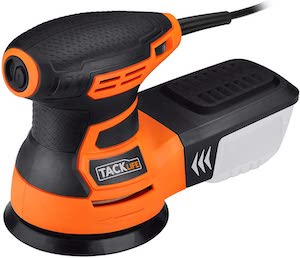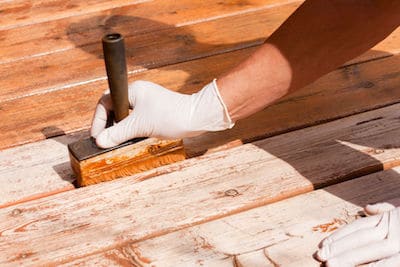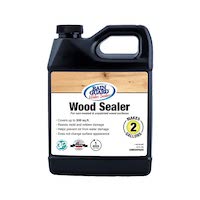When Should You Repair or Replace Rotten Wood?
If you have rotten wood on your porch, deck, siding, or in your home, it’s important to know whether you should repair it or replace it. Not only is rotting wood an eyesore, but it can be a safety hazard and legal liability as well. The last thing you want is for your home to become dangerous for your family, friends, and loved ones.
Can Rotten Wood Be Repaired? Rotting wood can be repaired by first removing any rot from the original board or beam of wood. Once that has been done, you can fill the area with a wood-patch or polyester filler. This material will fill the area and harden to provide strength and durability.
When it comes to repairing rotten wood, it’s important to realize when you can actually repair the wood rather than having to replace it. If a piece of wood is too far gone with rot, trying to repair it won’t do much good. Keep reading to learn more about how to tell whether you need to repair rotten wood or replace it.
Termite Damage vs. Wood Rot
Wood rot and termite damage have some
(Remove** Termite damage and a specific type of wood rot, known as dry rot, can not only be confused, but both can cause extensive damage to structures. The two forms of damage look similar to one another and might not be noticed right away. Being able to differentiate between the two is important for treating the potentially disastrous problems.)
How to Tell Whether to Repair or Replace Rotten Wood
If a piece of wood has experienced too much rot, the strength and integrity of the beam will be compromised. A wooden beam can experience rot in areas but still be stable and strong in support. It’s important to be able to realize the difference between these two situations so that you can make the right decisions when it comes to repairing or replacing the wooden beam.
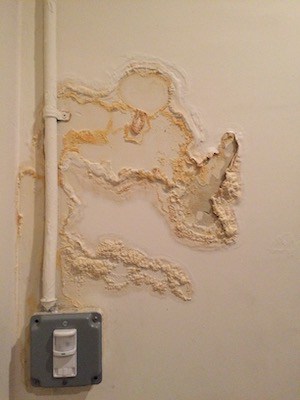 How to Recognize Dry Rot
How to Recognize Dry Rot
The first step to being able to figure out whether to repair or replace rotted wood is to be able to recognize dry rot and weaken areas of the wood. Believe it or not, but dry rot is actually a fungus that causes the majority of wood damage you’ll see.
When wood has been affected by dry rot, it may look as if it is decaying. If you touch the wood, it will feel damp and soft. If you were to poke it with a screwdriver, you may notice that the wood appears to be squishy. You can easily tear a piece of the wood away just by using the screwdriver.
Wood affected by dry rot may also appear brittle, easily crumbling when pressure is applied. There may be deep cracks in the wood and fungus growing visibly around the affected area.
 Removing Dry Rot
Removing Dry Rot
If you have a wooden beam affected by dry rot to the point that it could easily be broken in two, then the board should be replaced. If you notice that you still have a strong piece of wood where only a few small areas are affected by dry rot, then you can repair the beam. Before you work to repair it, you’ll first want to remove all the damaged wood and dry rot from the beam.
You can remove affected pieces of wood by using a screwdriver to scrape away any soft or weakened bits of wood. Dry rot is a fungus, and fungi can spread quickly and effectively. Removing the dry rot is important to saving the rest of the wooden beam.
How to Prevent Dry Rot
One of the most effective ways of avoiding rotten wood on your property is by taking preventative measures to protect any wooden structure. This will ensure that the wood lasts a long time and stays safe from the effects of dry rot.
First, eliminate any source of excessive moisture that may be affecting the wooden structure. Fungus thrives in wet and moist environments. Check for leaks throughout your home and throughout your gutter system. Make sure all drainage pipes are cleared and take the necessary precautions to irrigate and move water away from your home.
You can paint a polyurethane coat over pieces of wood to seal the wood from water damage. This can go a long way in protecting the wooden structures of your home and preventing dry rot.
If you do repair wood that has been affected by dry rot, you can use a fungicide on the beam to eliminate any other traces of dry rot that may come back and damage the board further. These preventative measures can save you from the trouble of having to deal with dry rot in the first place.
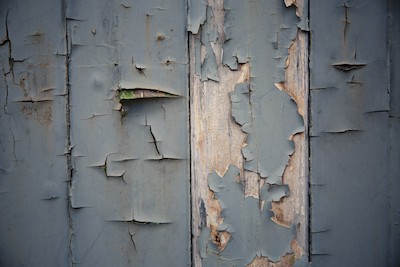 What You’ll Need to Repair Rotted Wood
What You’ll Need to Repair Rotted Wood
Before you go and try to repair rotted wood, it’s important to have the right tools. Here is a list of the tools you’ll need to effectively repair a beam of wood:
- Screwdriver or knife
- Wood-filler
- Putty knife
- Wood sander
- Wood primer
- Paint
These tools are essential for effectively repairing rotten wood!
 How to Repair Rotted Wood: Step-By-Step
How to Repair Rotted Wood: Step-By-Step
Now that you know how to recognize dry rot and tell whether or not you’ll need to repair or replace rotted wood, it’s time to go over step-by-step how to repair a wooden beam affected by rot.
- Remove any rot from the beam by using a screwdriver or another effective tool to dig out the rot. Be sure to remove any soft and compromised wood. Dig our the affected wood until you reach the strong unaffected wood.
- Mix together your wood filler solution. The solution will act as putty.
- Take the wood filler putty and fill in the areas of wood that you dug out. Be sure to press the putty into the space so that every area is filled and sealed.
- Let the wood filler putty sit and harden. You’ll know that the putty has hardened when you can’t dent it by pressing a fingernail into it.
- Once the putty has hardened, you can file, sand, and shape it to match the wooden beam.
- Prime and paint over the repaired wood to help it blend with the rest of the wood.
Repairing rotted wood may seem tricky, but it’s quite straight forward once you know how to do it correctly. You can use this same technique and materials to repair wood that has cosmetic blemishes like chips and cracks.
What Wood Filler Should I Use?
When it comes to repairing a piece of wood, there are many different wood-patch products out there. Many of them are polyester filler or epoxy. These materials are known to be durable and tough, great for blending with a piece of wood. Here are the most popular types of wood-repair solutions you may find:
- 3M Bondo Home Solutions Wood Filler
- Abatron WoodEpox Replacement Compound Wood Filler
- FamoWood 40022126 Latex Wood Filler
- Elmer’s E887Q Stainable Wood Filler
- Donald Durhams Rockhard Water Putty Wood Filler
Most of these products you can find at a home convenience store. If you have a home with large wooden fixtures like a porch or wooden siding, it may be a good idea to have wood-repair filler on hand so you can use it as needed.
How to Take Care of Wooden Fixtures
Properly caring for wooden fixtures around your home can help to prevent rot. Here are some care tips you can use for wooden decks, wooden siding, and wooden porches:
Seal the Wooden Fixture
One way to protect wooden fixtures is by sealing them with paint, wood stain, or a clear sealer. This will help to protect the wood from water damage, fungus, and other damage. You should paint or restain about every five years to keep the wood protected.
Clean Wooden Fixtures Annually
Cleaning wooden fixtures annually can remove mildew that can eventually lead to mold. To do this, use warm soapy water and a scrub brush to scrub dirt and other debris from the wood.
I hope that this article will help you feel confident when it comes to caring for and repairing wood around your home. An important part of home ownership is to be able to take the steps necessary to ensure that your home stays safe for everyone who lives there; whether this comes to repairing wood or replacing it.

